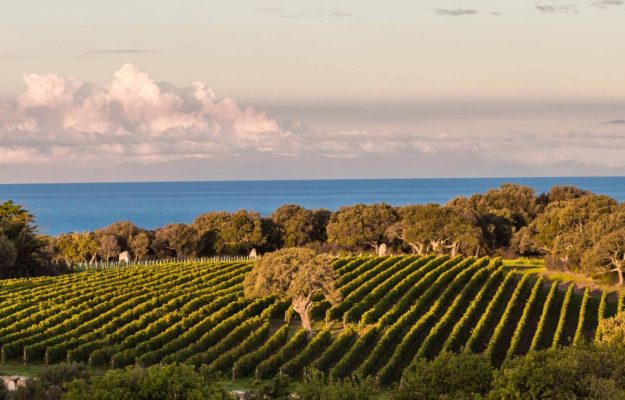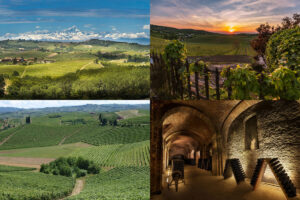In the three-year period 2019-2021, wineries’ revenues grew by 11.6% with a significant improvement in their profitability (+7.17% ebitda). Investments also grew (+13.7% over 2019) and this activity did not generate a proportional increase in financial debt, which, instead, decreased by -19.15% over 2019. A sign that value has been worked on, and that the industry believes in its possibilities and reinvests the growing profits back into the company. This is the salient fact that emerges in the analysis of 2021 budgets (854 companies) that represent an aggregate of revenues of 12.7 billion euros by the Management Study Center of Studio Impresa, led by Luca Castagnetti (and anticipated in part in July 2022 as part of VinoVip Cortina, and deepened today and published in “Il Corriere Vinicolo”, published by Unione Italiana Vini (Uiv)). The top wineries by profitability? At the absolute top, by ebitda, is Tenuta San Guido with 63.48%, followed by Ornellaia and Masseto with 59.86%, Jermann with 57.98%, San Felice with 56.3%, Antinori with 53.7%, and Tenuta di Biserno with 52.2%, the best among the 19 wineries with an ebitda above 35 percent.
Specifically, according to the summary edited by Castagnetti for WineNews, in 2021 the aggregate of vineyards, wineries and facilities is 7,902,561,803 euros, an increase of 3.2% over 2020 and 13.7% over 2019. In contrast, the total exposure to the financial system goes down: in 2021 it is 1,572,095,327 euros, an improvement of 10.4% over 2020 and 19.15% over 2019. That is, a very good financial performance. The net financial position to EBITDA ratio is not only very good, but improves from 1.9 in 2019 to 1.4 in 2021. Thus, in 2021, the industry enjoys a very good financial situation. So much so that looking at net worth, equity comes to 10,515,303,325 euros, an increase of 6.64% over 2020 and 28.76% over 2019 (see focus)..
If this is general picture, Castagnetti explains, the research for the first time provides us with data from as many as 424 companies with revenues up to 5 million, which, added to the 160 companies that reach 10 million come to represent only 16% of total sales. Perhaps statistically insignificant, but within them lie diverse and extraordinarily successful models. Net of a picture in which small businesses, however, lose revenue. Over the three-year period, they decrease their sales by 11.1%. All other brackets are, however, catching up on 2020, and the big ones are growing a lot: +26.17% for the bracket over 50 million euros in sales. Because the market belongs to the big guys, and in this light we understand the many aggregations in recent years.
Small companies, on the other hand, have the best profitability understood as Ebitda (earnings before taxes, fees, depreciation and amortization and provisions): 11.8% versus 10.3% on average. But the result is definitely affected by the reduction in sales and marketing costs (trade shows and travel) due to the pandemic.
Looking at the cooperative world, again, it emerges that sales of the 273 cooperatives analyzed increased by 10.25% over the three-year period. A good growth but lower than that of private enterprises (+12.28%). Margins are stable over the three-year period with values just over 5%, and the difference with private enterprises widens to as much as 7.6 points in 2021. The distribution of cooperation in Italy is significant in 7 regions (around 30 social wineries per region) and then spread unevenly in the other regions. The incidence of social wineries on sales per region varies widely: from 59% in Sicily and Trentino to 9% in Tuscany. The research, like previous editions, offers an original figure: the “Tangible fixed assets)/total assets” index. Firms with an index below the median of 30% (Asset Light) have less investment in vineyards and wineries (more commercial firms) while firms with an index above the median (Asset Strong) have more investment in vineyards and wineries. The market belongs to “Asset Light” companies: +23.06% over 2020 versus a -3.23% for Asset Strong. In contrast, “Asset Strong” companies have a significantly higher margin than Asset Light: a 15.42% versus an 11.54%. The gap is widening as the former improve (+27.19% margin increase over 2021) while the latter worsen (-2.03%). This analysis suggests different business models and strategies: trading companies with lower margins vs. supply chain companies with higher margins; short term logic vs. medium to long term strategies; pursuit of revenues or margins; investing in productivity or brand value.
Furthermore, according to the research edited by Studio Impresa’s Management Study Center, led by Luca Castagnetti, in the summary for WineNews, if one analyzes the data without taking into account the profound differences between agricultural and industrial/commercial enterprises, one runs the risk of not understanding the real state of affairs. For example, in Lombardy, firms with greater real estate assets have an average ebitda of 18.65% but agricultural firms reach 29% and industrial/commercial firms stop at 10.02%. Different strategies often characterize them: greater quality control over grapes, arrangements related to sustainability protocols, organizational models with a lot of manual labor, “historicty”. Agricultural companies were positively reflected in the market in 2021: their revenue growth over 2020 was 23% while industrial companies grew by 16%. Looking at the issue of taxation, then, agriculturalists have a tax incidence on net income of 10.38% versus a 37.65% of industrialists (3.5 times higher). Linked to the agricultural world we also find social wineries, which on the subject of taxation record an even lower incidence: 2.8% on net income.
Looking at regional performance, at the top by revenues is Veneto, with 4.2 billion, +18.06% over 2020, an average ebitda of 8.56% and a cooperation incidence of 28.5%. Next in revenues is Emilia Romagna, with 1.4 billion, at +6.22% over 2020, a profitability of 6% and a cooperation incidence of 59%. Then, with 1.3 billion euros, there is Tuscany, at +18.64%, and the primacy of Ebitda, at 20.16%, with the weight of cooperation being only 9.9%. With 1.1 million euros in revenues, at +11.3%, an ebitda of 8.07% and a weight of cooperation of 62.1% is Trentino Alto Adige, which is ahead of Piedmont in revenues, at 1.09 million euros, +17.6%, an average ebitda of 13.6% and cooperation at 23.5%. Also among the top regions by revenues are Lombardy, at 834,516,791 euros; Apulia, at 802,575,222 euros; and Sicily, at 537,586,099, which is the region where cooperation accounts for the most, or 62.3 percent, according to the analysis. Among the highlights, Veneto has a high productivity per employee reaching 828,773 euros.
Franciacorta drags Lombardy’s good profitability: in Brescia, average ebitda is 36.10%. So does Bolgheri, in Livorno, with average ebitda of 57.43%: province No. 1 in Italy for profitability.
Focus - The “Best Performer” companies: the 19 with Ebitda above 35%.
Società Agricola Citai (Tenuta San Guido) - 63,48%
Ornellaia & Masseto Società Agricola Srl - 59,86%
Jermann Srl - Società Agricola - 57,98%
Societa Agricola San Felice Spa - 56,32%
Antinori Società Agricola Srl - 53,78%
Tenuta di Biserno Società Agricola - 52,28%
Azienda Agricola Poggio Le Volpi Società Agricola - 49,89%
Altesino Srl Società Agricola - 47,58%
Rolando Srl - 42,77%
Vini Classici Borgogno Srl - 41,48%
Società Agricola Monte Rossa Srl - 40,26%
Società Agricola Fratelli Tedeschi Srl - 40,05%
Ca’ del Bosco Srl - 39,84%
Argentiera Srl Società Agricola - 39,73%
Prunotto Srl - 38,34%
Tenute di Castelgiocondo Srl - 37,84%
La Rivetta Società Agricola Srl - 37,30%
Castello di Ama Srl Società Agricola - 36,27%
Tormaresca Società Agricola Srl - 35,72%
Copyright © 2000/2025
Contatti: info@winenews.it
Seguici anche su Twitter: @WineNewsIt
Seguici anche su Facebook: @winenewsit
Questo articolo è tratto dall'archivio di WineNews - Tutti i diritti riservati - Copyright © 2000/2025








































































































































































































